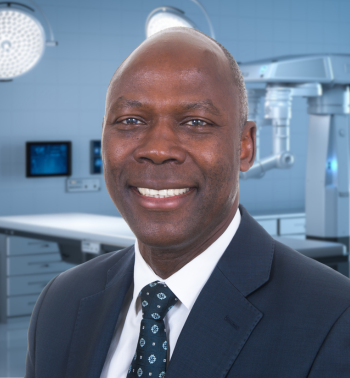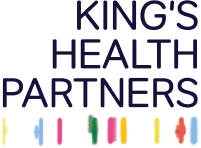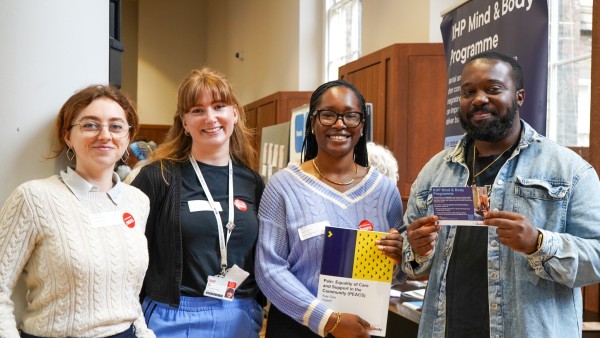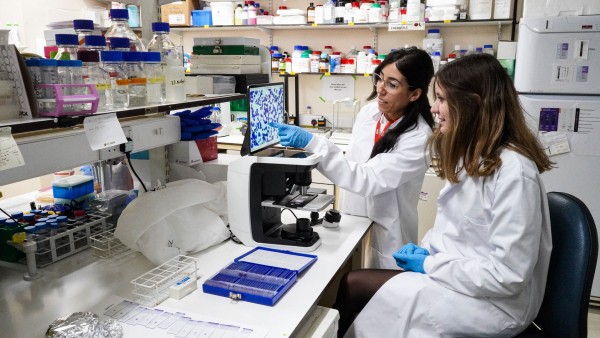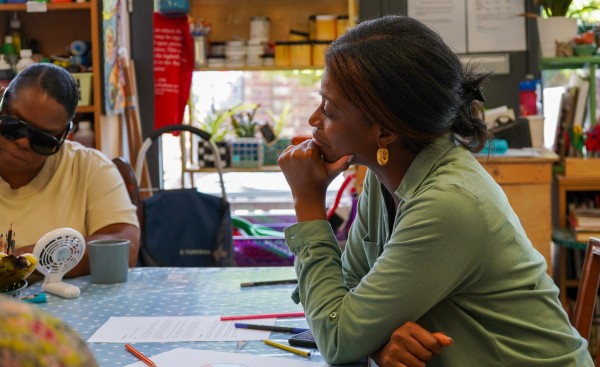3 September 2024
The future of surgery will be shaped by the surgical technologies that are in development today.
KHP News wanted to get a sneak peak of what this future could look like, so we met with Mr Yakubu Karagama – a consultant Ear, Nose and Throat (ENT) surgeon and laryngologist – to explore some of his innovations. Mr Karagama is a clinician by background, but he has also been working in partnership to develop new products that could revolutionise his own practice and the wider field of surgery.
What surgical innovations are in development?
One of the big projects I have been supporting is the design of a 3D Larynx or voice box and the swallow anatomy. The primary aim of this project is to help medical students develop their understanding of this area of the throat.
If successful, this product will provide an alternative learning tool for trainee surgeons, so they don’t have to use cadavers. The anatomy that we are developing is very similar to human anatomy and we hope it will be useful for medical students when they begin to practise surgical procedures. I have been working on this project with Prof Kawal Rhode in the King’s College London School of Biomedical Engineering & Imaging Sciences – which headed by Prof Sebastien Ourselin. Another innovation that I have been working on is a robot that can be used in clinic for the laryngology service. The Laryngology service deals with airway, voice, and swallowing disorders. Currently robotic surgery is accessible for outpatient procedures but not in clinic procedures. Yet we know that clinic room procedures mean fewer patients being admitted onto hospital wards, a reduced risk of hospital acquired infections and time saved for patients and staff. Clinic room procedures also require smaller teams - a hospital theatre will need a team of at least six, in a clinic room we only need three. We want to introduce robotic surgery into the clinic because the motion in laryngology procedures can cause a gag reflex, so surgeons must perform very fine movements.
If we can develop a robot that can help to minimise the gag reflex by performing the best possible movements, I think patients will love that. Right now, there's nothing like this that we are aware of.
How do surgical innovations benefit patients?
When it's not a painful condition, people can mistakenly assume it's not a big worry for the patient. However, when people start developing chronic conditions, it can often be because those early conditions have not been treated. Alongside the physical health implications, when a patient attends to you with a disease or condition of any kind, I think 80% of the time what they are going through will have an impact on their mental health.
Innovation is not just about addressing the disease or the condition itself, it’s about what we can do for patients to improve their overall quality of life and prevent further health problems from developing.
I have seen first-hand the difference that surgical innovation makes for patients. In 2022 I became one of the first surgeons to implant a new surgical device in patients with obstructive sleep apnoea. The device was implanted on the chest wall and connected to the tongue to prevent the tongue from falling back and blocking the throat when the patient falls asleep. The procedure had very good results and no complications. Sleep apnoea interrupts and prevents REM sleep, which in turn affects mental and physical health. It can cause headaches, difficulties concentrating, and it can have a significant effect on the heart and the endocrine system. These patients are also at risk of developing arrhythmia, high blood pressure, diabetes, and thyroid problems.
When surgeons work with surgical innovations, we need to measure quality of life for patients before and after an operation to assess if the innovation has helped because that is the true measure of a products success.
How did you become a surgical innovator?
One way that I got involved in surgical innovation was through the London Institute of Healthcare Engineering (LIHE). Their head of department - Dr Valentina Vitiello – asked me to be a clinical advisor as they interview innovations companies about new technology. The LIHE is embedded within St Thomas' campus bringing students and clinicians closer together. It provides an opportunity for surgeons to be more involved in the innovations that are meant to benefit our practice. We can look at clinical areas and share our experience to inform discussions around what procedures we think will benefit most from new innovations.
I want to be more involved with this translational service because it opens so many doors and it will to be good for experienced people to lead the way.
King’s Health Partners Academic Surgery hosts an Executive Fellowship in Surgical Leadership programme with a focus on innovation and entrepreneurship in surgery. If you are interested to become an innovator in surgery like Mr Karagama, take a look at this bespoke programme offer. Senior trainees and consultants are welcomed to apply.
